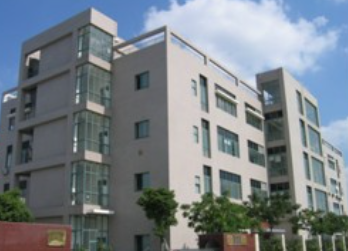三苯膦溴化物,如 Ph3PX2 , PH3P + CX3X – 以及亚磷酸三苯酯溴化物如(PhO)3PX2 、(PhO)3P + RX – ,在和醇进行溴置换反应是,具有活性大,反应条件温和等特点。由于反应中产生的溴化氢很少,因此不容易发生溴化氢引起的副反应。
这两类试剂均可由三苯膦或亚磷酸三苯酯和溴素或溴代烷直接制得,不经过分离纯化即可和醇进行反应。其反应历程是这些试剂和醇反应生成醇烷氧基取代的三苯膦加成物或相应的亚磷酸酯,后经溴素负离子的 SN 2 反应,生成溴化物,同时发生构型翻转。

这些试剂的应用很广泛,常以 DMF 或 HMPTA 作为溶剂进行溴置换反应,也可在较温和的条件下将光学活性的仲醇转化成构型翻转的溴代烃,或对某些在酸性条件下不稳定的化合物进行溴化。

此外,三苯膦或亚磷酸酯和 N-溴代酰胺组成的复合溴化剂与上述试剂相似,但特别适宜于对酸不稳定的醇或者是甾体醇的溴置换反应,也可用于缺电子的π体系的羟基溴置换。

醇和三苯基膦和四溴化碳加合物的反应
Example A :3-(5-Fluro-1H-indol-3-yl) ethyl Bromide

To a solution of 1 (4 g, 22.5 mmol) in CH2Cl2 (50 ml) at room temperature was added CBr4 (11.2 g, 34 mmol) followed by triphenylphosphine (8.8 g, 33 mmol). The reaction mixture was allowed to stir for 2.5 h, and the solvent was removed under vacuum. Chromatography (30% EtOAc-hexanes) afforded 5.91 g (98%) of product 2 as an off-white solid.
Example B :(4s)-1-(tert-butoxycarbonyl)-4-bromo-D-proline benzyl ester

The alcohol (5.34 g, 16.7 mmol) and CBr4 (16.6 g, 50 mmol) were dissolved in 100 ml of dichloromethane. This solution was treated with solid triphenylphosphine (13.1 g, 50mmol) over a 10 min period. This solution was allowed to stir for 18 h, and then 10 ml of ethanol was added. After 2 h this solution was treated with 100 ml of Et2O by dropwise addition over a 0.5 h period. The mixture was filtered, and the filtrate and washings were trhen concentrated and purified by flash chromatography to give 4.79 g (74% yield) of the title compound. This material recrystallized (Et2O/hexane) on standing to give mp 87-88℃。
Example C :1-Bromo-1-cyclopropylcyclopropane

In a well-ventilated hood, a 2-L, three-necked, round-bottomed flask, equipped with a magnetic stirrer, thermometer, dropping funnel, and a reflux condenser, is charged under nitrogen with 327 g (1.24 mol) of triphenylphosphine, and 1.24 L of anhydrous dichloromethane . The solution is vigorously stirred under acetone-dry ice cooling, as 199 g (64.1 ml, 1.25 mol) of bromine is added over a period of 0.5 hr at −30°C to −15°C under nitrogen. After an additional 15 min of stirring, a mixture of 116 g (1.18 mol) of 1-cyclopropylcyclopropanol and 93.5 g (95.6 ml, 1.18 mol) of anhydrous pyridine is added dropwise at −15°C over a period of 2 hours. The mixture is stirred at 20°C for an additional 24 hours under nitrogen. The reflux condenser and the dropping funnel are removed. The flask is immersed in an oil bath and connected to a 2-L, two-necked, round-bottomed flask via a 90° angle glass tube. The second flask is cooled with acetone-dry ice. All the volatile material is bulb-to-bulb distilled, at first under water-aspirator vacuum and 30°C oil bath temperature, and then under further reduced pressure (0.1 mm) with a 100°C oil bath. The distillation is continued until the temperature in the first flask reaches 80°C. The receiver flask is allowed to warm to 20°C, and the solvent is removed by distillation at atmospheric pressure using a 30-cm Vigreux column. The residue is distilled under reduced pressure to give 117.1 g(62%) of 1-bromo-1-cyclopropylcyclopropane.







